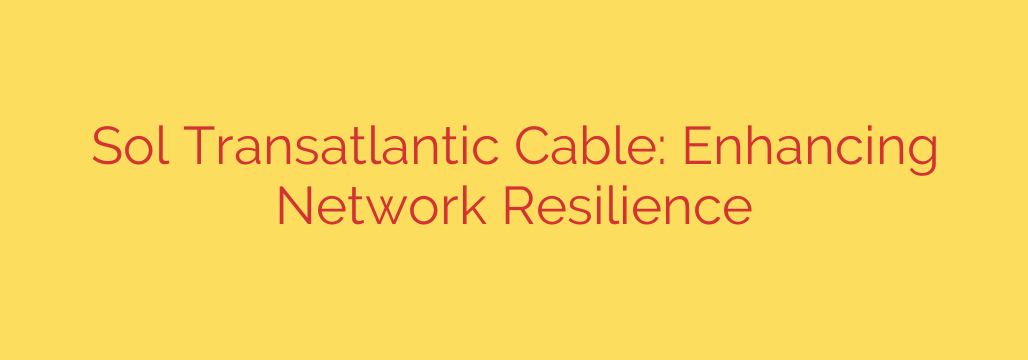
Fortifying Global Connections: Why Undersea Cables Like Sol Are Essential for Network Resilience
In our increasingly interconnected world, the flow of data across oceans is the lifeblood of global commerce, communication, and culture. Most of this vital traffic travels not through satellites, but through a vast network of fiber-optic cables laid on the ocean floor. These transatlantic arteries are critical infrastructure, and ensuring their reliability and resilience is paramount.
The transatlantic route is among the busiest data highways on the planet, linking continents and powering everything from financial transactions and scientific research to streaming entertainment and cloud computing. With data demands skyrocketing, the need for robust, high-capacity connections has never been greater. However, these cables are vulnerable to various threats, including natural disasters, fishing activity, shipping anchors, and even intentional damage. A single break can cause significant disruption and slow down traffic across vast regions.
This is where the concept of network resilience becomes crucial. Resilience means building a network that can withstand unexpected events and continue to function effectively. It’s about ensuring that if one path goes down, others can seamlessly take over. A key strategy for achieving this resilience is through diversity and redundancy in the cable network.
Significant new infrastructure projects, like the Sol Transatlantic Cable, play a vital role in enhancing this resilience. By adding a new, geographically diverse route across the Atlantic, Sol doesn’t just increase overall capacity; it provides an essential alternative path for data. This means that if an existing cable system is damaged or experiences an outage, traffic can be rerouted over the Sol cable, minimizing downtime and maintaining connectivity.
The benefits of such investments in robust subsea infrastructure are far-reaching:
- Improved Reliability: Businesses and consumers can depend on more stable and consistent internet and communication services.
- Enhanced Speed and Lower Latency: More routes mean data can potentially travel shorter or less congested paths, leading to faster load times and more responsive applications.
- Support for Future Growth: High-capacity cables are built to handle the ever-increasing volume of data generated by emerging technologies like AI, IoT, and advanced cloud services. Investing in diverse, high-capacity links like Sol is fundamental to supporting the digital economy of tomorrow.
- Reduced Risk: Redundancy mitigates the impact of potential cable faults or deliberate attacks, strengthening overall network security and stability.
Ultimately, building and maintaining a resilient global network relies on continuous investment in diverse, high-capacity undersea cable systems. Projects that add new routes and enhance redundancy are not just about faster internet; they are about fortifying the essential digital connections that underpin modern society and ensuring the continued flow of information even in the face of unexpected challenges. Robust transatlantic infrastructure is a cornerstone of global digital stability.
Source: https://cloud.google.com/blog/products/infrastructure/announcing-sol-transatlantic-cable/








